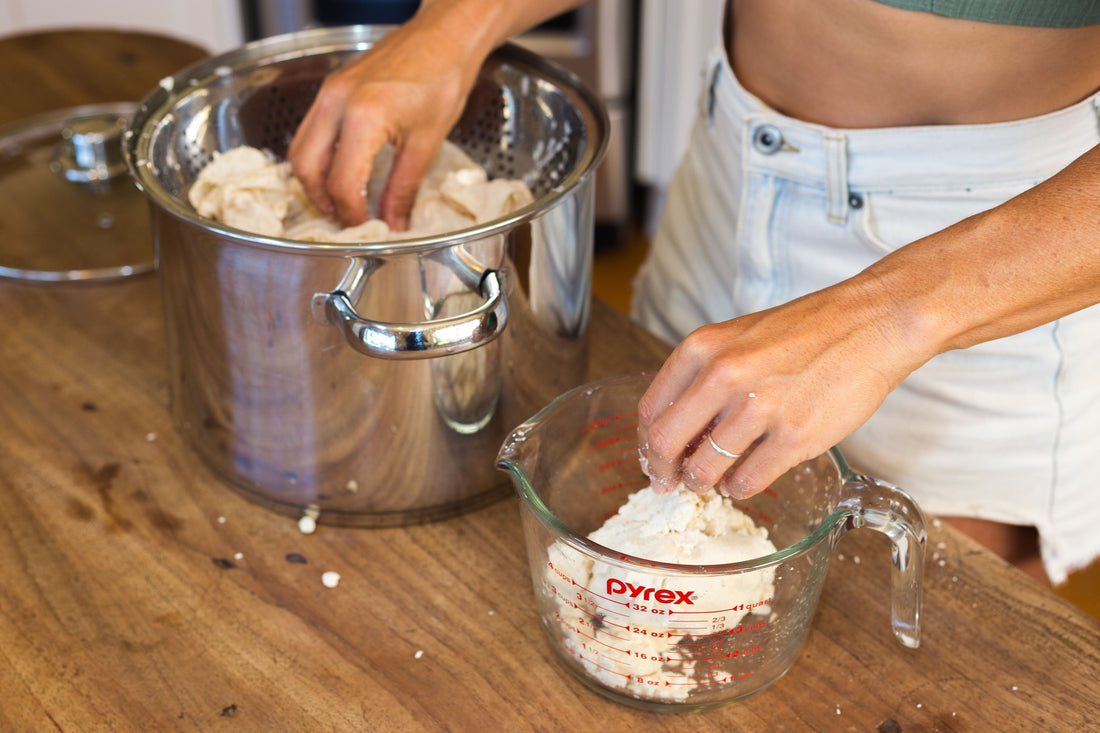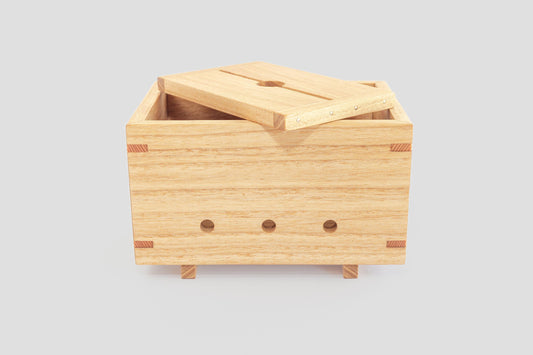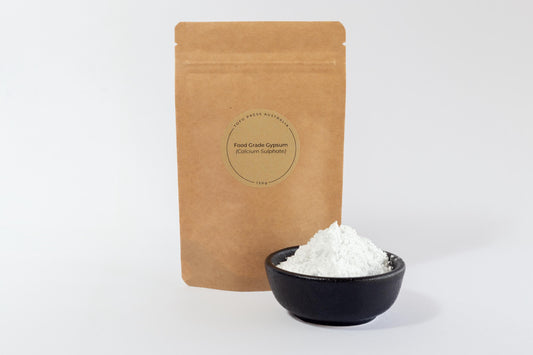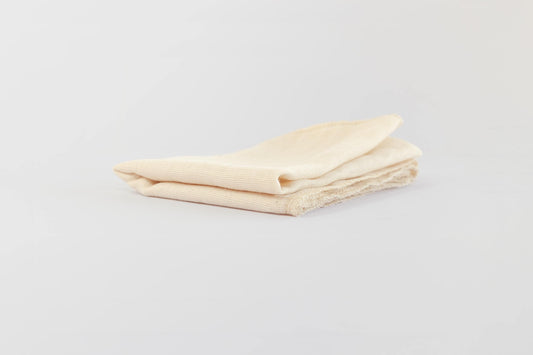
Okara Explained: The Nutrient-Rich By-Product of Tofu That You Shouldn't Waste
When it comes to tofu-making, many people focus only on the silky curds that form their tofu blocks. But there’s a by-product of tofu making that deserves just as much attention—okara, AKA soy pulp. This humble 'bonus ingredient' is often discarded and during commercial production of tofu, okara is mostly used as livestock feed, sent to landfill or even burnt; all the more reason to make your own tofu. It is, in fact, a nutritionally rich ingredient with impressive potential in home kitchens.
For people making tofu at home, okara deserves a central place in your tofu-making process—not just as a by-product but as a valuable ingredient in its own right.
What is Okara?
Okara (pronounced oh-KAH-rah) is the pulp left behind after soy milk is extracted from soaked and blended soybeans. If you've made tofu at home, you’ll be familiar with the process: you blend soaked soybeans with water, strain out the milk and are left with a soft, slightly coarse paste. That paste is okara.
While it’s often viewed as 'leftover,' okara is anything but! It's rich in fibre, protein and essential nutrients and has a mild, nutty flavour that pairs beautifully with both sweet and savoury dishes.
Nutritional Value of Okara
Okara's most notable nutritional feature is its dietary fibre. It is especially high in insoluble fibre, which supports gut health, regular digestion and makes a great prebiotic. The insoluble fibre content paired with a low calorie count makes okara ideal for increasing satiety and as a weight loss aid. It also contains respectable amounts of protein, along with minerals such as calcium, iron and magnesium.
Here’s a snapshot of what 100 grams of fresh okara contains (approximate values):
| Energy | 77kcal (322kJ) |
| Protein | 3.5g |
| Dietary Fibre | 11-14g |
| Fat | 1.7g |
| Calcium | 80mg |
| Iron | 1.3mg |
| Magnesium | 26mg |
| Carbohydrates | 12g |
It’s also low in sugar and naturally gluten-free, making it suitable for a wide range of diets.
Sustainability and Zero-Waste Living
One of the best reasons to incorporate okara into your routine is its sustainability. Making tofu or soy milk at home is already a big step towards reducing packaging waste, transport emissions and reliance on highly processed foods. But by using every part of the soybean, including the pulp, you can go one step further.
Globally, okara is produced in massive quantities by tofu factories and much of it is discarded or used as low-grade animal feed. By making your own tofu, soymilk and okara, you’re closing the loop—reducing food waste, saving money and embracing the full cycle of plant-based living.
How to Store Okara
Fresh okara is quite moist and perishable. After straining your soy milk, you should refrigerate your okara immediately in an airtight container. It will last up to 3 days in the fridge.
For longer storage, freeze it in portions. It freezes well for up to 3 months. If you make tofu regularly, consider freezing small amounts so you can use what you need when the time comes.
You can also dry or dehydrate okara for a longer shelf life and more versatility. Dried okara can be used as a flour substitute or added to dry mixes.
Common Uses for Okara in the Kitchen
Okara is incredibly versatile and can be used in both sweet and savoury dishes. Its soft, neutral flavour makes it a great base ingredient. Here are some of our favourite ways to use it:
1. Okara Burgers or Patties
Mix okara with herbs and spices to form plant-based patties. Add chia meal as a binder. Pan-fry until golden and serve in a bun or on a salad.
2. Baked Goods
Use okara in muffins, banana bread, pancakes or cookies to boost moisture and fibre. You can replace part of the flour or simply add a few tablespoons to your mix.
3. Homemade Veggie Nuggets
Combine okara with mashed potato, peas, nutritional yeast and spices. Shape into nuggets, coat in crumbs and bake or air-fry.
4. Soups and Stews
Stir a scoop of okara into soups, stews or lentil dahls for added body and creaminess.
5. Scrambled Okara
Sauté with turmeric, garlic, onion and your favourite vegetables for a scrambled egg alternative.
6. Crackers or Flatbread
Mix okara with wholemeal flour, seeds, herbs and a bit of oil to create fibre-rich crackers—great for snacks or dipping into hummus.
7. Okara Brownies
Use in your usual brownie recipe, substituting some of the flour for okara. The result is an extra moist and nutty brownie. Delicious.
Okara in the Garden
Not interested in eating it every time? No worries—okara is also fantastic for the garden.
Its high nitrogen content makes it an ideal addition to compost. If you have chickens, you can feed them small amounts of okara as a snack.
Drying and Reusing Okara
A great way to increase the usability and shelf life of okara is by drying it. Okara has a high water content (around 80%) and by drying it, you can use it as a substitute for flour and other dry ingredients where wet okara might introduce too much moisture. You can do this by:
-
Oven-drying: Spread the okara on a baking tray and dry it at a low temperature (around 90°C) for 3–4 hours, stirring occasionally.
-
Dehydrator: Use a food dehydrator for more energy-efficient drying.
-
Pan-drying: Stir-fry okara in a dry pan over low heat until it becomes golden and dry.
Once dried, okara can be blended into a fine flour and stored in jars for baking, thickening soups or adding to muesli bars and granola.
Okara FAQs
Q: Is okara safe to eat raw?
A: Yes, it’s technically safe to eat raw but it’s best when cooked to improve texture and digestibility. Additionally, cooking okara helps to remove phytates and other anti-nutrients that may restrict the absorption of minerals.
Q: Can I give okara to pets?
A: In small amounts, yes. Dogs and chickens can enjoy okara in moderation but avoid giving it to cats. It should be noted that animals can have soy allergies, just like humans.
Q: Does okara contain soy allergens?
A: Yes, it contains the same proteins as soy milk and tofu, so those with soy allergies should avoid it.
Embracing the Whole Bean
By using okara in your kitchen, garden or home, you're not only getting more value from your tofu-making efforts—you’re also embracing a more sustainable, thoughtful way of living.
Whether you bake it into muffins, turn it into nourishing patties or compost it into your veggie patch, okara is a small but mighty ingredient that deserves a second look.
So next time you make tofu or soy milk, pause before tossing out the pulp. With a little creativity, you might just discover a very handy, zero-waste ingredient!



